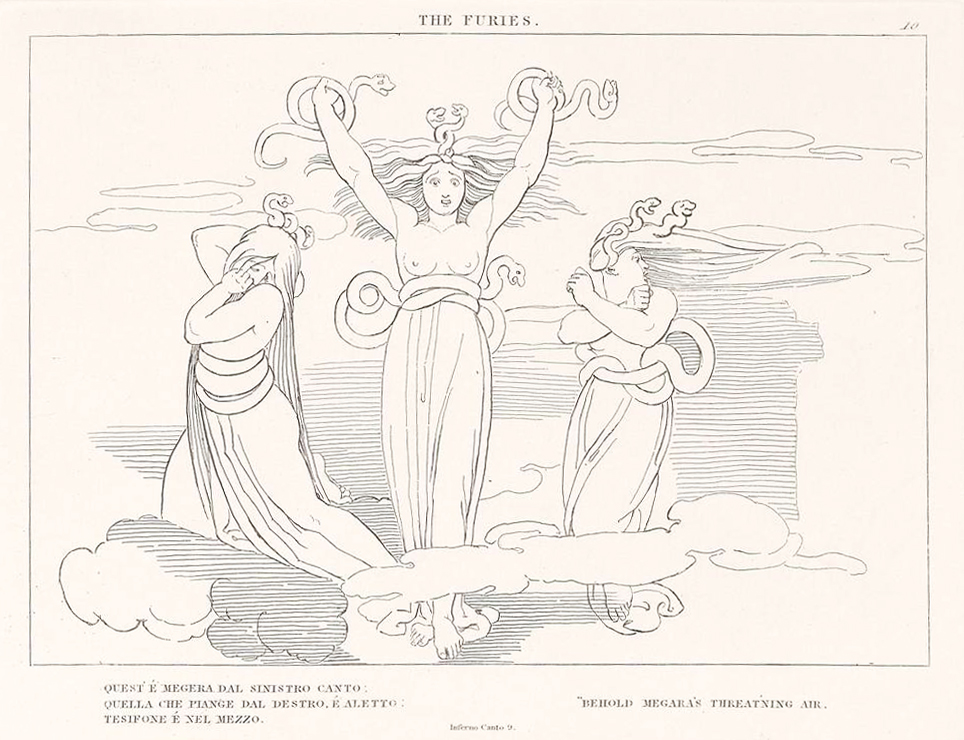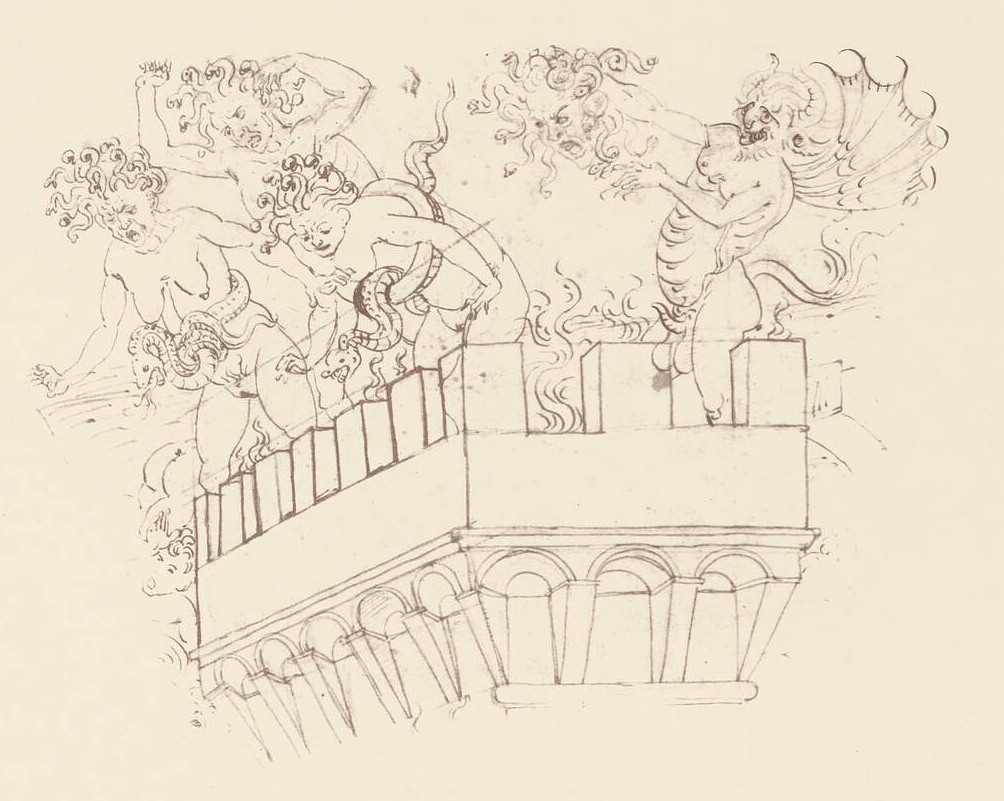Furies

For the ancient Greeks, the Furies, or Erinyes (also known as the Eumenides - Kindly Ones - so as not to tempt their wrath), were goddesses of anger and revenge. Their role was to relentlessly hound and scourge those who subvert the natural order – usually the murder of family members. While in earlier sources they were unnumbered – Hesiod’s Theogony has them rising from the droplets of blood spilt when Chronos castrated Ouranos - the Aeneid reduces them to three: Alekto, Megaera and Tisiphone.
Dante encounters these three rising from a tower at the burning walls of Dis, the vast city of demons that encloses the Sixth Circle and everything below, beyond which they refuse to let him pass. The Divine Comedy describes them as blood-stained, and having snakes for hair – a trait first described by Aeschylus in his 5th century BCE play The Eumenides. This makes them visually cognate with the Medusa, which is perhaps why the Furies threaten Dante with the presence of the Gorgon (but never actually produce her), the sight of which would turn him to stone. In his illustration to the scene below, Botticelli seems unable to help himself, and has included a devil, amused at its own mischief, brandishing Medusa’s disapproving head.

Narratively, the poem has the Furies attempting to halt Dante’s progress in order to redeem their failure to stop Theseus raiding the underworld to free Persephone (another reference to tales relayed in the Aeneid). Allegorically however, they represent blind retribution, as opposed to God’s justice, making them appropriate gatekeepers to the Circle of Heresy beyond the walls.